By Heiner Fruehauf
Heiner Fruehauf’s prolific research trip to China and Vietnam in the summer of 2014 to source high quality, potent, directly-traded Chinese herbs from small family farms provided a significant amount of material and information about didao yocai and paozhi – terroir and traditional preparation methods, respectively. As a result, he brings you some of that knowledge in this series, information that is quickly being lost to the ages.
Etymology and Cultural Significance
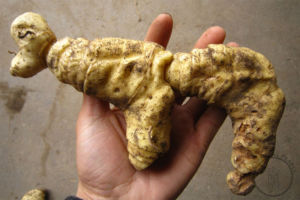
Freshly harvested 6 year old Huangjing
Huangjing, once an herb of global significance, has been all but forgotten by modern herbalists. Referred to as Siberian Solomon’s Seal in the West, it was first mentioned by Dioscorides and Pliny during the 1st century. It became a valued substance in both European and Native American medical practices, especially for healing connective tissue injuries and other musculoskeletal issues. Today, however, few practitioners know how to use Solomon’s Seal anymore. In China, Huangjing never was a component of the classical materia medica (it is not mentioned in either the Shen Nong bencao jing nor the Shanghan lun), but featured prominently in Daoist alchemical texts such as the writings of Ge Hong, Tao Hongjing, and Sun Simiao. Tao Hongjing’s initial introduction of Huangjing in his 6th century Mingyi bielu (An Extraneous Record of Famous Physicians) conveys the typical Daoist flavor that has become associated with the herb since then:
When consumed for long periods of time, Huangjing will cause the body to become weightless, prolong its life span, and alleviate the need to eat food.
Modern biochemical research shows that Huangjing contains a complex array of sugars, starches, vitamins, minerals and antioxidants. At the same time, it has been identified as one of the most effective antifungal agents within the Chinese materia medica. It therefore is not surprising that the ritual imbibing of Huangjing during prolonged periods of fasting and cleansing was once a key component of Daoist hermit practice in China. Over time, many stories developed that enshrouded the medicinal properties of Huangjing in the terms of mythological lore, often associating the herb with the Queen Mother of the West (Xiwangmu), legendary ancestor of Daoist longevity knowledge, or the clairvoyant healer Hua Tuo.
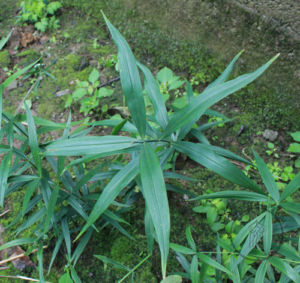
Leaves of a young plant
One reason why Huangjing features so prominently in the esoteric arts of nourishing life in China is the pungent flavor of the unprocessed root, linking it to the concept of yang qi and solar forces. Taiyangcao (Sun Herb) is a common nickname for Huangjing in Daoist folklore, and even its proper name Huangjing can potentially be rendered as “essence of the sun.” The Song dynasty literatus Zhu Qi once exclaimed in a poem composed after being presented with a bottle of Huangjing Wine: “The Sun Herb: nothing more potent in the scrolls of the Immortals for keeping old age at bay!”
Medicinal Quality
Related to this “solar” nature of Huangjing is the fact that a variety of alternate names have likened the root to ginger, perhaps the most prominent among the yang stimulating herbs in the Chinese materia medica. Shengjiang (fresh ginger), Yeshengjiang (wild fresh ginger), Shanshengjiang (mountain fresh ginger), and Laohujiang (tiger ginger) are all names that were at one time or another associated with this plant. The 18th century text Yilin zuanyao (A Compilation of Essential Knowledge from the Medical Classics) best describes the hot and pungent nature of the unprocessed root:
The flavor of fresh and unprocessed Huangjing is pungent and will irritate the throat when imbibed directly. Only when steamed/dried thoroughly and repeatedly will the herb develop the desired affect of nourishing and tonifying the kidney. Otherwise, its pure yang quality may arouse the fire of the Vital Gate and cause bleeding. Mountain folk who occasionally drink more than a cup of the fresh root juice have been known to experience nose bleeds—this phenomenon alone reveals to us the extremely hot nature of this herb!
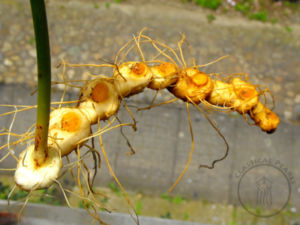
A freshly harvested root still attached to the stalk
Interestingly, most ancient Chinese herb primers describe the flavor of Huangjing as sweet and its temperature as neutral or slightly warming. This classification clearly refers to the processed version of the root. Thorough steaming diminishes the herb’s pungent flavor while enhancing its tonic properties. Modern laboratory experiments, moreover, have affirmed the practice of processing Huangjing for more reasons than just taste. It was shown that a tincture created from the raw root was toxic enough to kill all mice in the study, while an extract from the processed root did not harm a single animal. In the practice of Daoist alchemy, therefore, the labor- intensive process of steaming Huangjing with alcohol nine times was just as common as the similar processing of Shu Dihuang (Radix Rehmanniae preparata) in the mainstream tradition of Chinese herbalism.
A decoction made from processed Huangjing is sweet and nourishing, yet not as rich and sticky as a soup made from Dihuang. It stabilizes blood sugar while exhibiting anti-parasitic qualities, a rare and highly desirable feature among tonic herbs. Ginseng, in contrast, has a tendency to stimulate parasitic activity in people with latent viruses and other chronic pathogens. This particular feature makes Huangjing an excellent candidate for replacing Renshen in ginseng containing prescriptions for people who suffer from chronic fatigue, fibromyalgia and other chronic inflammatory conditions.
Traditionally, Daoist hermits have used Huangjing as a fasting aid during extended periods of cultivation in the mountains. Chinese peasants, moreover, used to consume the root during periods of starvation. Other than that, Huangjing has not been used broadly in traditional Chinese herbalism. It was not until the recent discovery of antioxidants and other beneficial micro-nutrients in Huangjing that the root has become elevated to the status of superfood in the more and more health conscious marketplace of modern China. Touted as an adaptogenic energy tonic that helps skinny people to gain weight and a blood sugar stabilizer for obese patients who wish to eat less, it is generally stewed with chicken or pork, or immersed in alcohol with other herbs to produce Longevity Wine.
In sum, the recent flurry of Huangjing research attributes the following actions to this ancient Daoist herb:
- Strengthen physical weakness
- Stimulate weak digestive function
- Increase oxygen absorption
- Increase memory and study focus; reverse developmental issues in children
- Regulate heart rhythm
- Decrease elevated cholesterol levels
- Regulate immune function (increase low WBC count)
- Regulate blood sugar
- Counteract fungal infections
- Benefit the eyes and correct near sightedness

Heiner Fruehauf with a Polygonatum stalk growing in the garden of a local herb collector in Hunan Province
In dried form, the herb resembles the more commonly known Dihuang, and some herbalists thus have likened it to this famous cousin. The 1920 herb primer Bencao zhengyi (True Meaning of the Materia Medica), for instance, describes Huangjing along these lines:
The flavor of Huangjing is sweet and its consistency is thick and sticky, very similar to Shu Dihuang… its function is also very much like Dihuang, tonifying the yin and the blood.
Modern herbalists who prescribe Huangjing often, however, tend to value it as a material that is not as cloying and thus easier to digest. In contrast to Dihuang, Huangjing can be used as a qi tonic that benefits the lifting effect of the Spleen while simultaneously moistening the yin of Lung, Stomach and Kidneys. Since the time of Hua Tuo, moreover, it has featured as a prominent component of anti-Gu (parasite/possession) formulas. Interestingly, the plant has been used in distinctly different ways in Western herbalism, where it is primarily used in prescriptions for connective tissue and muscular-skeletal injuries.
Traditional Terroir Considerations (didao yaocai)
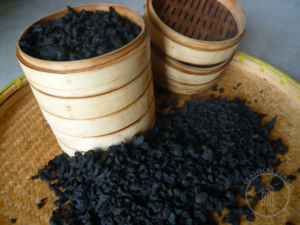
Processed Huangjing (traditional steaming method)
The mother plant typically grows in moist environments, and thus exhibits great ability to endure cold and damp conditions. For optimal medicinal effectiveness, mature 3-4 year old roots that have been collected in the wild should be used. When grown in rich soil, the root will grow as large as a fist, while poor soil conditions will produce only small finger-shaped tubers.
Traditional Processing (paozhi)
Classical Pearls sources its Huangjing in the remote mountains that separate the provinces of Shaanxi and Sichuan in SW China. Roots are wild-crafted by selectively harvesting plants that are at least 5 years old. Before extraction, traditional paozhi techniques are applied by steaming the large roots nine times.
REPRINTED WITH PERMISSION
To view a slideshow of one of Heiner Fruehauf’s trips to China, or see to view more information, please visit Classical Pearls Herbal Formulas, or visit the Facebook page.
© 2016 Classical Pearls, LLC


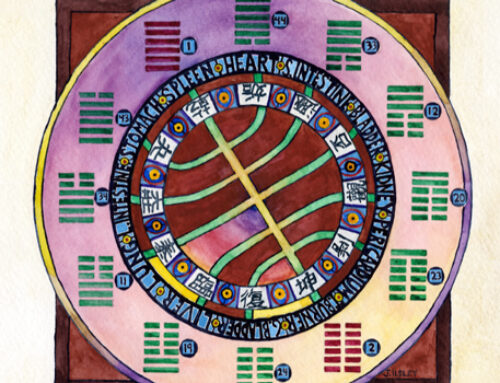

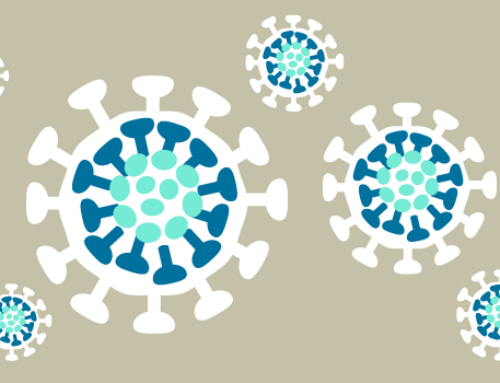
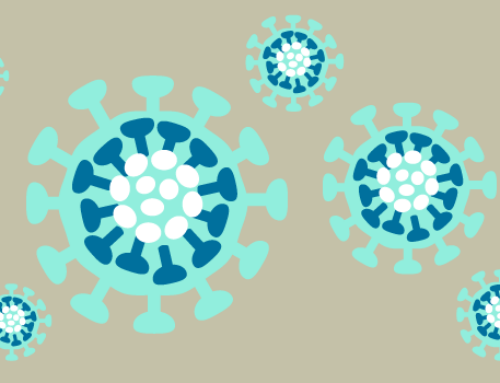

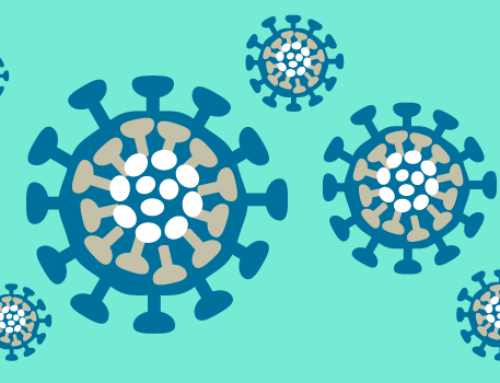

[…] yam), Dang Shen (codonopsis root—a bit stronger of a tonic than most bupins), Huang Jing (prepared Siberian Solomon Seal root), Fu Ling (poria mushroom—also helpful for promoting sleep and dreams). The European culinary […]
[…] yam), Dang Shen (codonopsis root—a bit stronger of a tonic than most bupins), Huang Jing (prepared Siberian Solomon Seal root), Fu Ling (poria mushroom—also helpful for encouraging sleep and dreams). The European culinary […]